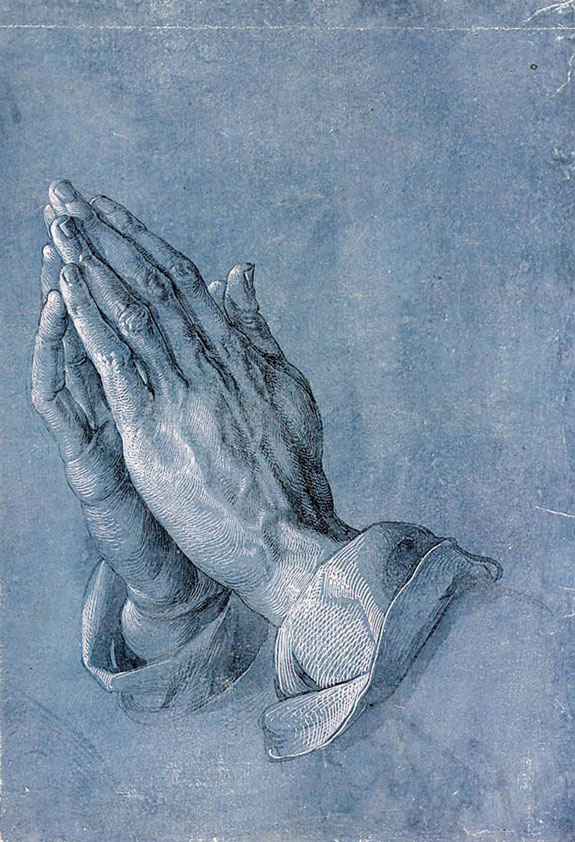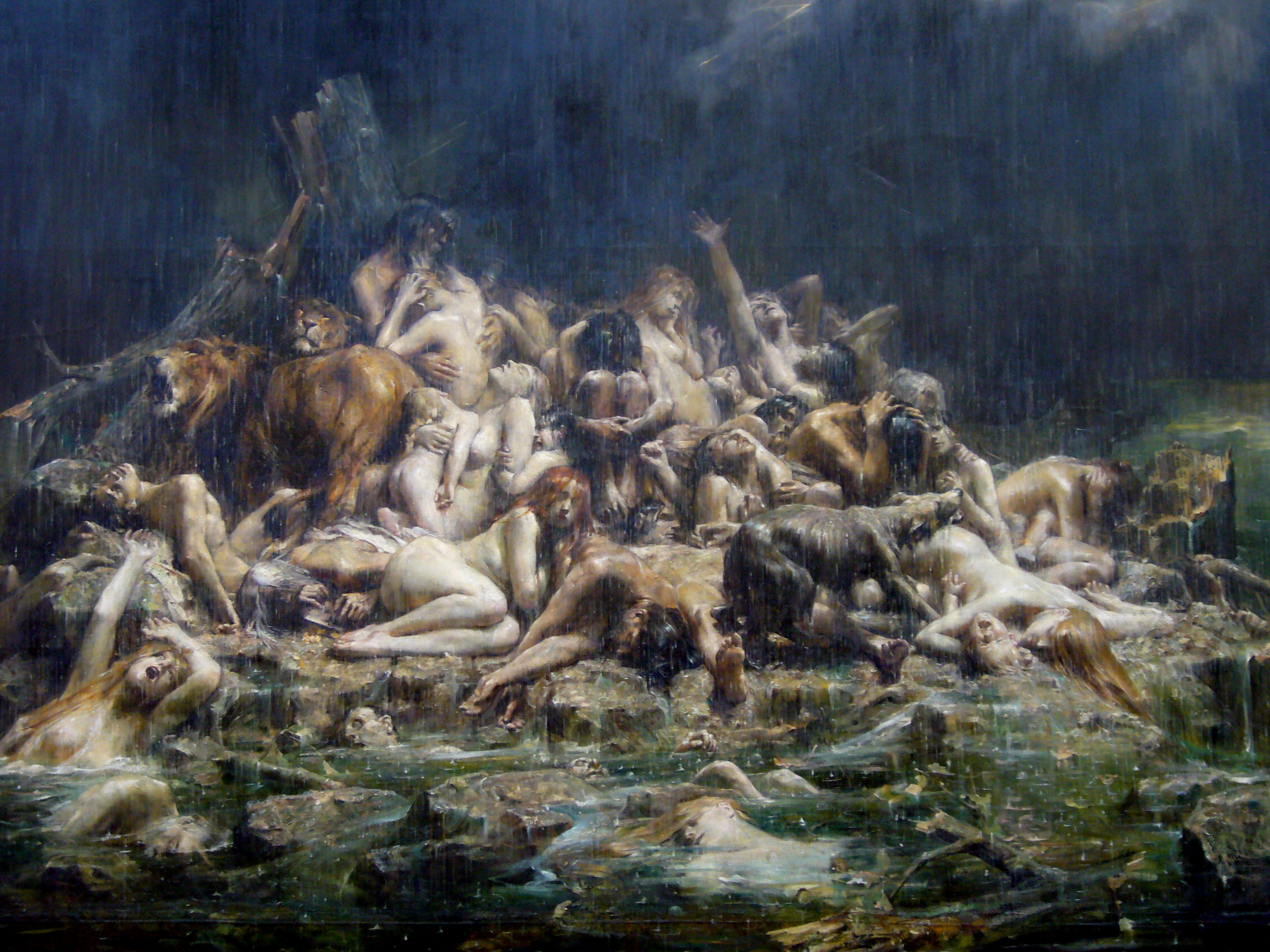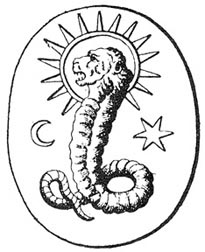|
A Valentinian Exposition
A Valentinian Exposition is the second tractate from Codex XI of the Nag Hammadi Library. Less than half of the text has been preserved. The text explores the relationship between God, the created world, and humanity. It states that the material world is a shadow of the spiritual world and that humanity is a mixture of spiritual and carnal elements. The Demiurge, a lower deity, is responsible for creating the physical world and humanity, and the Devil, who is one of the divine beings, expelled his root from the body of humanity and caused the world to fall into sin. It also explores themes such as salvation through knowledge and understanding of one's true identity. Summary The text discusses God and his creation. It mentions the Father, the Root of All, who dwells alone in silence, possessing everything within him. The Son is described as God's Thought and Mind of the All, stemming from the Root of the All. The Son is also the Father of the All, the projector of everything and ... [...More Info...] [...Related Items...] OR: [Wikipedia] [Google] [Baidu] |
Nag Hammadi Library
The Nag Hammadi library (also known as the " Chenoboskion Manuscripts" and the "Gnostic Gospels") is a collection of early Christian and Gnostic texts discovered near the Upper Egyptian town of Nag Hammadi in 1945. Thirteen leather-bound papyrus codices buried in a sealed jar were found by a local farmer named Muhammed al-Samman. The writings in these codices comprise 52 mostly Gnostic treatises, but they also include three works belonging to the ''Corpus Hermeticum'' and a partial translation/alteration of Plato's ''Republic''. In his introduction to ''The Nag Hammadi Library in English'', James Robinson suggests that these codices may have belonged to a nearby Pachomian monastery and were buried after Saint Athanasius condemned the use of non-canonical books in his Festal Letter of 367 A.D. The discovery of these texts significantly influenced modern scholarship's pursuit and knowledge of early Christianity and Gnosticism. The contents of the codices were written in the ... [...More Info...] [...Related Items...] OR: [Wikipedia] [Google] [Baidu] |
Sons Of God
Sons of God ( he, בְנֵי־הָאֱלֹהִים, Bənē hāʾĔlōhīm, literally: "sons of the Elohim") is a phrase used in the Tanakh or Old Testament and in Christian Apocrypha. The phrase is also used in Kabbalah where ''bene elohim'' are part of different Jewish angelic hierarchies. Hebrew Bible Genesis 6 The first mention of "sons of God" in the Hebrew Bible occurs at Genesis 6:1–4. In terms of literary-historical origin, this phrase is typically associated with the Jahwist tradition. That the "sons of God" were separate enough from the "daughters of men" that they warranted such a distinction, has spawned millennia's worth of debate regarding the meaning of the term. Historically, in Jewish thought, this passage has had many interpretations. Here are three: # Offspring of Seth: The first references to the offspring of Seth rebelling from God and mingling with the daughters of Cain are found in Christian and rabbinic literature from the second century CE o ... [...More Info...] [...Related Items...] OR: [Wikipedia] [Google] [Baidu] |
3rd-century Texts
The 3rd century was the period from 201 ( CCI) to 300 ( CCC) Anno Domini (AD) or Common Era (CE) in the Julian calendar.. In this century, the Roman Empire saw a crisis, starting with the assassination of the Roman Emperor Severus Alexander in 235, plunging the empire into a period of economic troubles, barbarian incursions, political upheavals, civil wars, and the split of the Roman Empire through the Gallic Empire in the west and the Palmyrene Empire in the east, which all together threatened to destroy the Roman Empire in its entirety, but the reconquests of the seceded territories by Emperor Aurelian and the stabilization period under Emperor Diocletian due to the administrative strengthening of the empire caused an end to the crisis by 284. This crisis would also mark the beginning of Late Antiquity. In Persia, the Parthian Empire was succeeded by the Sassanid Empire in 224 after Ardashir I defeated and killed Artabanus V during the Battle of Hormozdgan. The Sassanids th ... [...More Info...] [...Related Items...] OR: [Wikipedia] [Google] [Baidu] |
Gnostic Apocrypha
Gnosticism (from grc, γνωστικός, gnōstikós, , 'having knowledge') is a collection of religious ideas and systems which coalesced in the late 1st century AD among Jewish and early Christian sects. These various groups emphasized personal spiritual knowledge (''gnosis'') above the orthodox teachings, traditions, and authority of religious institutions. Gnostic cosmogony generally presents a distinction between a supreme, hidden God and a malevolent lesser divinity (sometimes associated with the Yahweh of the Old Testament) who is responsible for creating the material universe. Consequently, Gnostics considered material existence flawed or evil, and held the principal element of salvation to be direct knowledge of the hidden divinity, attained via mystical or esoteric insight. Many Gnostic texts deal not in concepts of sin and repentance, but with illusion and enlightenment. Gnostic writings flourished among certain Christian groups in the Mediterranean world aroun ... [...More Info...] [...Related Items...] OR: [Wikipedia] [Google] [Baidu] |
Eucharist
The Eucharist (; from Greek , , ), also known as Holy Communion and the Lord's Supper, is a Christian rite that is considered a sacrament in most churches, and as an ordinance in others. According to the New Testament, the rite was instituted by Jesus Christ during the Last Supper; giving his disciples bread and wine during a Passover meal, he commanded them to "do this in memory of me" while referring to the bread as "my body" and the cup of wine as "the blood of my covenant, which is poured out for many". The elements of the Eucharist, sacramental bread ( leavened or unleavened) and wine (or non-alcoholic grape juice), are consecrated on an altar or a communion table and consumed thereafter, usually on Sundays. Communicants, those who consume the elements, may speak of "receiving the Eucharist" as well as "celebrating the Eucharist". Christians generally recognize a special presence of Christ in this rite, though they differ about exactly how, where, and when Chri ... [...More Info...] [...Related Items...] OR: [Wikipedia] [Google] [Baidu] |
Baptism
Baptism (from grc-x-koine, βάπτισμα, váptisma) is a form of ritual purification—a characteristic of many religions throughout time and geography. In Christianity, it is a Christian sacrament of initiation and adoption, almost invariably with the use of water. It may be performed by sprinkling or pouring water on the head, or by immersing in water either partially or completely, traditionally three times, once for each person of the Trinity. The synoptic gospels recount that John the Baptist baptised Jesus. Baptism is considered a sacrament in most churches, and as an ordinance in others. Baptism according to the Trinitarian formula, which is done in most mainstream Christian denominations, is seen as being a basis for Christian ecumenism, the concept of unity amongst Christians. Baptism is also called christening, although some reserve the word "christening" for the baptism of infants. In certain Christian denominations, such as the Lutheran Churches, bapt ... [...More Info...] [...Related Items...] OR: [Wikipedia] [Google] [Baidu] |
Anointing
Anointing is the ritual act of pouring aromatic oil over a person's head or entire body. By extension, the term is also applied to related acts of sprinkling, dousing, or smearing a person or object with any perfumed oil, milk, butter, or other fat. Scented oils are used as perfumes and sharing them is an act of hospitality. Their use to introduce a divine influence or presence is recorded from the earliest times; anointing was thus used as a form of medicine, thought to rid persons and things of dangerous spirits and demons which were believed to cause disease. In present usage, "anointing" is typically used for ceremonial blessings such as the coronation of European monarchs. This continues an earlier Hebrew practice most famously observed in the anointings of Aaron as high priest and both Saul and David by the prophet Samuel. The concept is important to the figure of the Messiah or the Christ (Hebrew and Greek for "The Anointed One") who appear prominently in Jewis ... [...More Info...] [...Related Items...] OR: [Wikipedia] [Google] [Baidu] |
Prayer
Prayer is an invocation or act that seeks to activate a rapport with an object of worship through deliberate communication. In the narrow sense, the term refers to an act of supplication or intercession directed towards a deity or a deified ancestor. More generally, prayer can also have the purpose of thanksgiving or praise, and in comparative religion is closely associated with more abstract forms of meditation and with charms or spells. Prayer can take a variety of forms: it can be part of a set liturgy or ritual, and it can be performed alone or in groups. Prayer may take the form of a hymn, incantation, formal creedal statement, or a spontaneous utterance in the praying person. The act of prayer is attested in written sources as early as 5000 years ago. Today, most major religions involve prayer in one way or another; some ritualize the act, requiring a strict sequence of actions or placing a restriction on who is permitted to pray, while others teach that praye ... [...More Info...] [...Related Items...] OR: [Wikipedia] [Google] [Baidu] |
Genesis Flood Narrative
The Genesis flood narrative (chapters 6–9 of the Book of Genesis) is the Hebrew version of the universal flood myth. It tells of God's decision to return the universe to its pre- creation state of watery chaos and remake it through the microcosm of Noah's ark. The Book of Genesis was probably composed around the 5th century BCE, although some scholars believe that Primeval history (chapters 1–11), including the flood narrative, may have been composed and added as late as the 3rd century BCE. It draws on two sources, called the Priestly source and the non-Priestly or Yahwist, and although many of its details are contradictory, the story forms a unified whole. A global flood as described in this myth is inconsistent with the physical findings of geology, paleontology, and the global distribution of species. A branch of creationism known as flood geology is a pseudoscientific attempt to argue that such a global flood actually occurred. Some Christians have preferred t ... [...More Info...] [...Related Items...] OR: [Wikipedia] [Google] [Baidu] |
Will Of God
The will of God or divine will is a concept found in the Hebrew Bible and the New Testament and the Quran, according to which God's will is the first cause of everything that exists. See also * Destiny * ''Deus vult'', a Latin expression meaning "God wills it", canonically expressed at the outset of the First Crusade. * Divine law, any law that, according to religious belief, comes directly from the will of God, in contrast to man-made law. * " God willing" is an English expression often used to indicate that the speaker hopes that his or her actions are those that are willed by God, or that it is in accordance with God's will that some desired event will come to pass, or that some negative event will not come to pass. * God's Plan (other) * Inshallah * Karma * Luisa Piccarreta * Mashallah * Plan of salvation, in general Christian concept. ** Plan of salvation (Latter Day Saints) is the view of God's plan as described by the Latter Day Saint movement. * Predestina ... [...More Info...] [...Related Items...] OR: [Wikipedia] [Google] [Baidu] |
Demiurge
In the Platonic, Neopythagorean, Middle Platonic, and Neoplatonic schools of philosophy, the demiurge () is an artisan-like figure responsible for fashioning and maintaining the physical universe. The Gnostics adopted the term ''demiurge''. Although a fashioner, the demiurge is not necessarily the same as the Creator figure in the monotheistic sense, because the demiurge itself and the material from which the demiurge fashions the universe are both considered consequences of something else. Depending on the system, they may be considered either uncreated and eternal or the product of some other entity. The word ''demiurge'' is an English word derived from ''demiurgus'', a Latinised form of the Greek or . It was originally a common noun meaning "craftsman" or "artisan", but gradually came to mean "producer", and eventually "creator". The philosophical usage and the proper noun derive from Plato's ''Timaeus'', written 360 BC, where the demiurge is presented as the c ... [...More Info...] [...Related Items...] OR: [Wikipedia] [Google] [Baidu] |
Angel
In various theistic religious traditions an angel is a supernatural spiritual being who serves God. Abrahamic religions often depict angels as benevolent celestial intermediaries between God (or Heaven) and humanity. Other roles include protectors and guides for humans, and servants of God. Abrahamic religions describe angelic hierarchies, which vary by religion and sect. Some angels have specific names (such as Gabriel or Michael) or titles (such as seraph or archangel). Those expelled from Heaven are called fallen angels, distinct from the heavenly host. Angels in art are usually shaped like humans of extraordinary beauty. They are often identified in Christian artwork with bird wings, halos, and divine light. Etymology The word ''angel'' arrives in modern English from Old English ''engel'' (with a hard ''g'') and the Old French ''angele''. Both of these derive from Late Latin ''angelus'', which in turn was borrowed from Late Greek ''angelos'' (lit ... [...More Info...] [...Related Items...] OR: [Wikipedia] [Google] [Baidu] |









